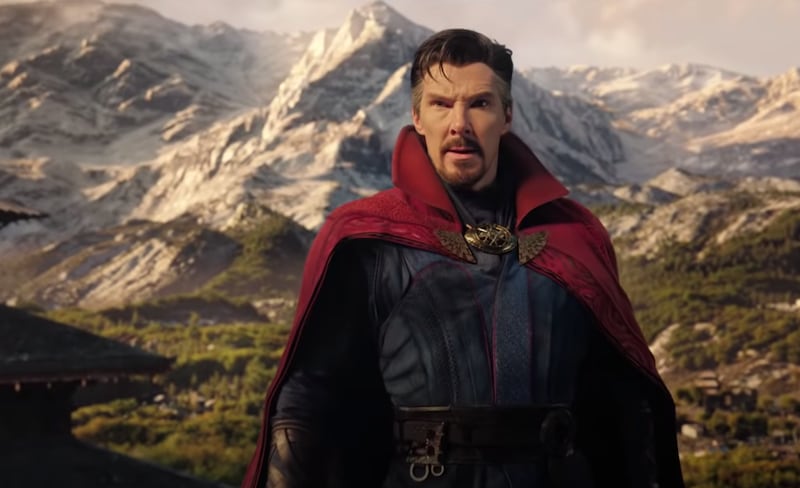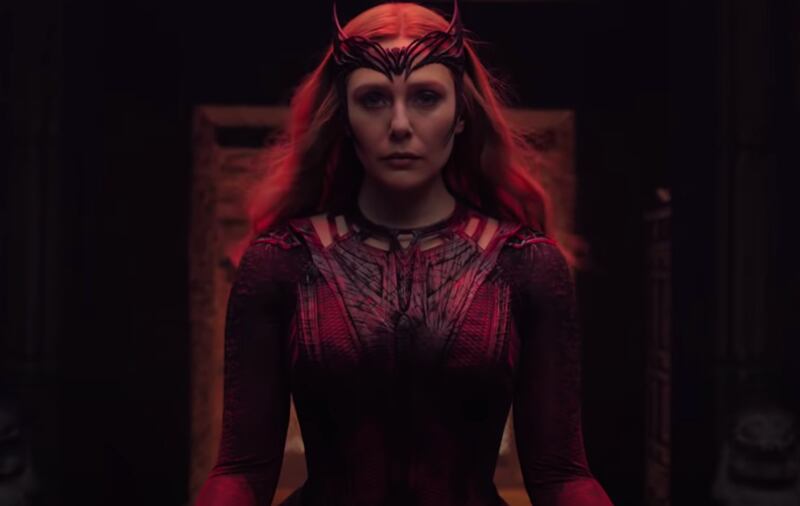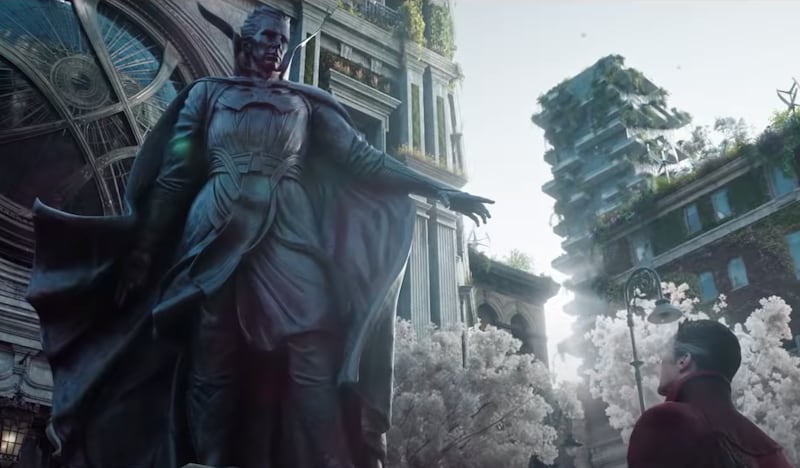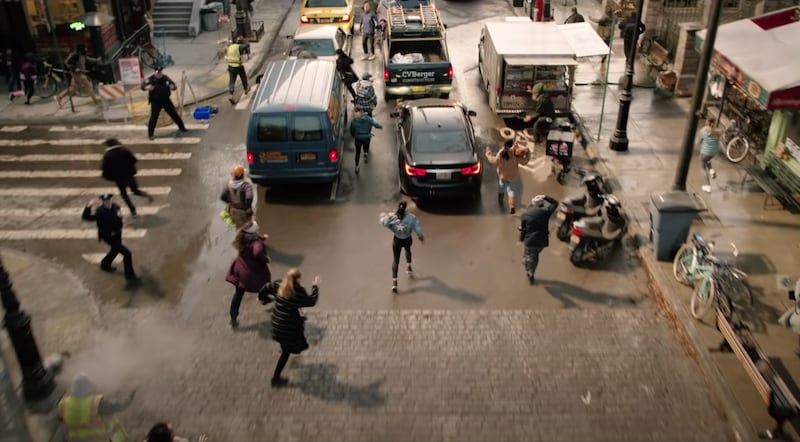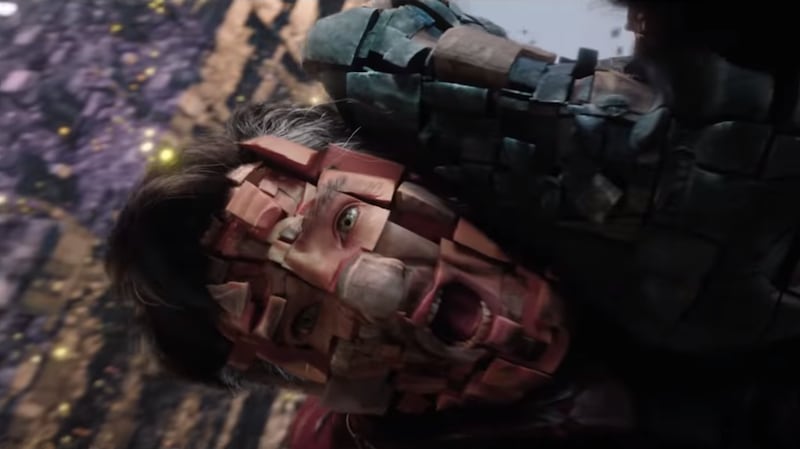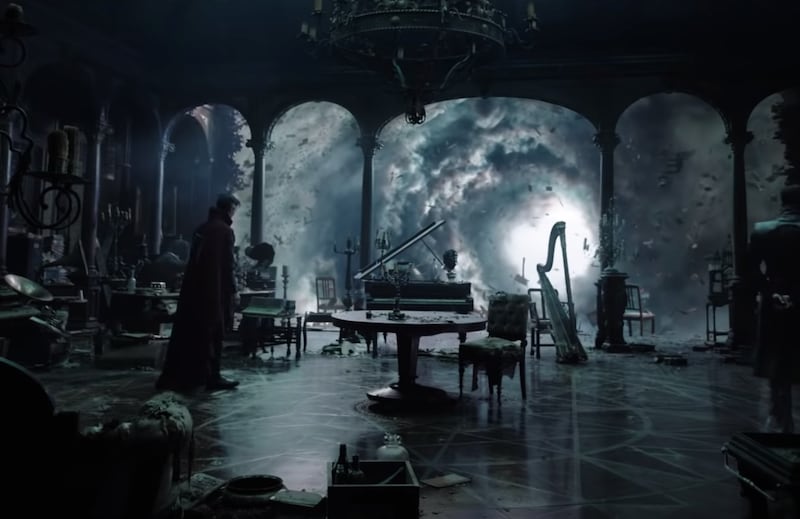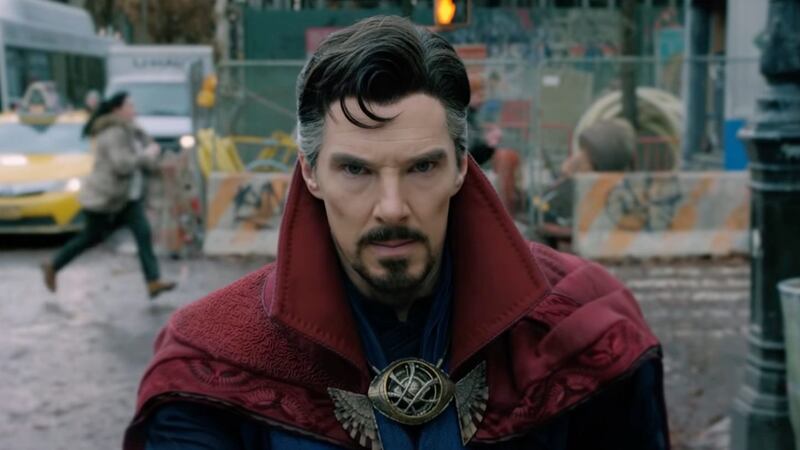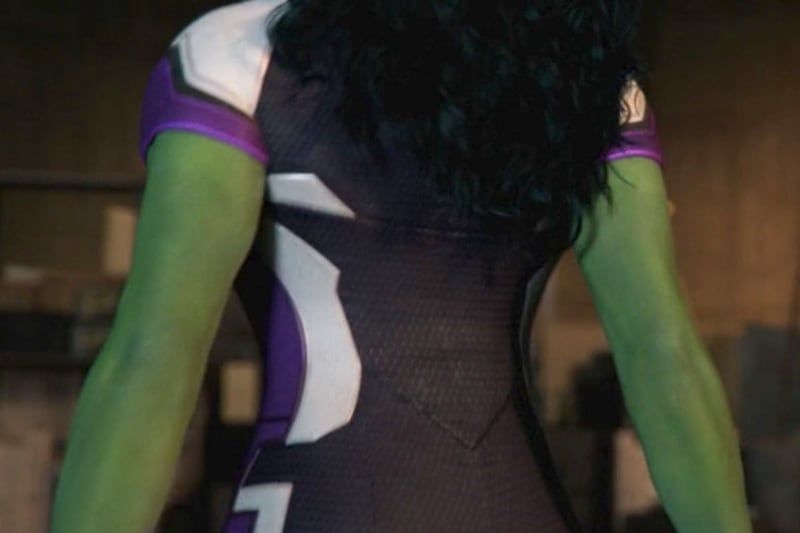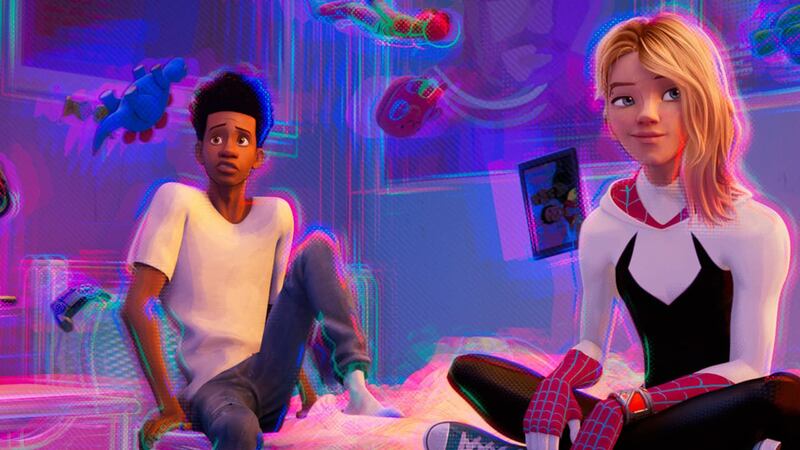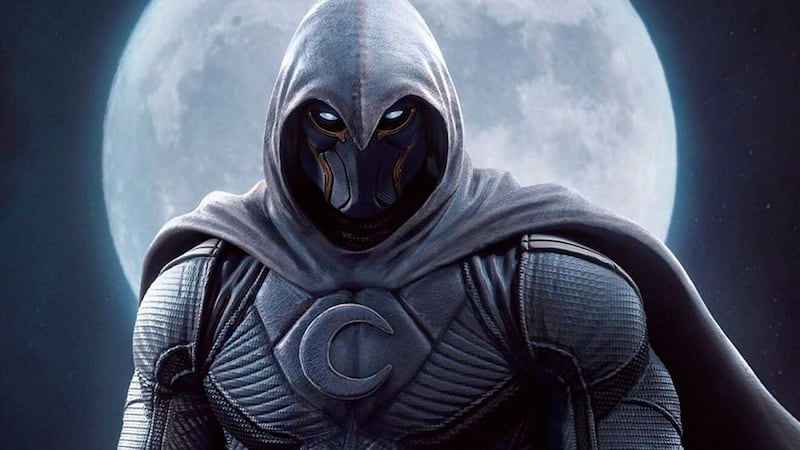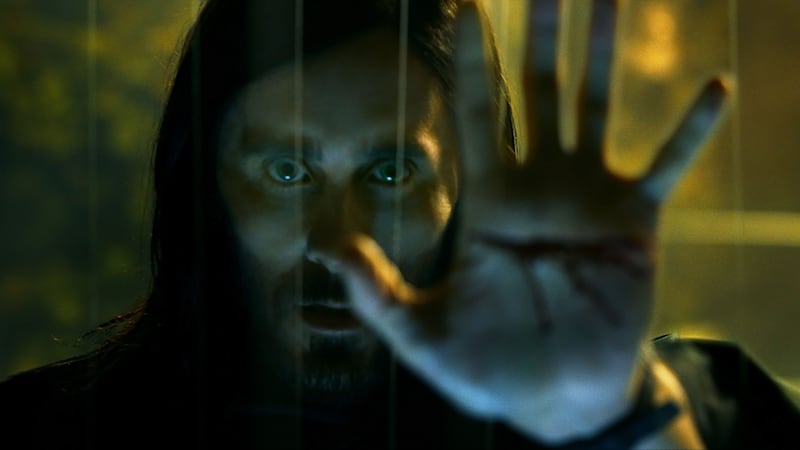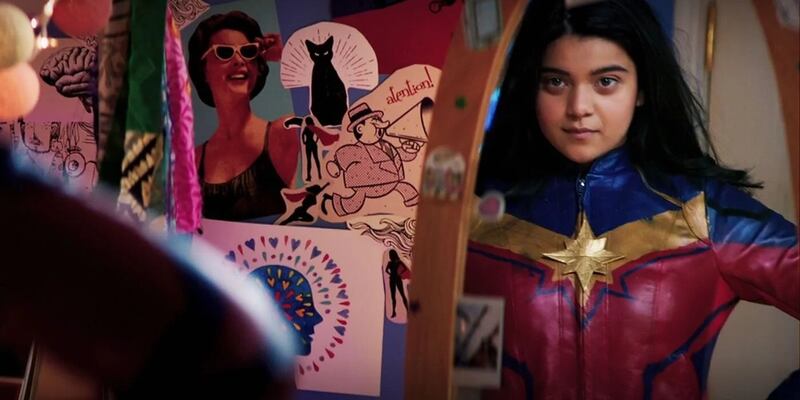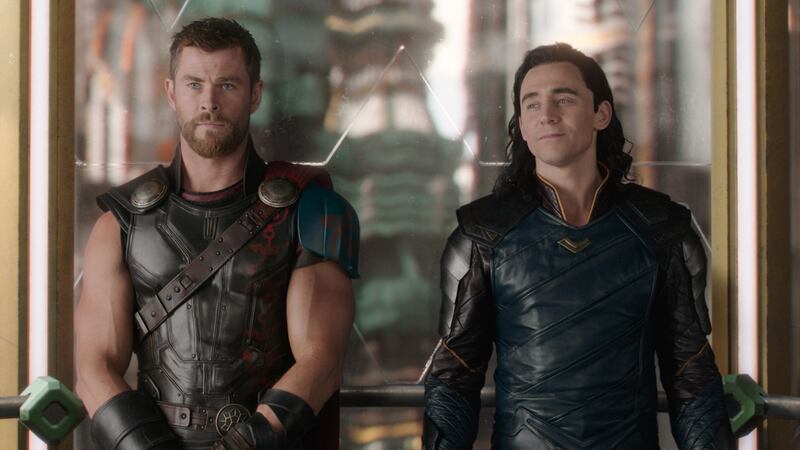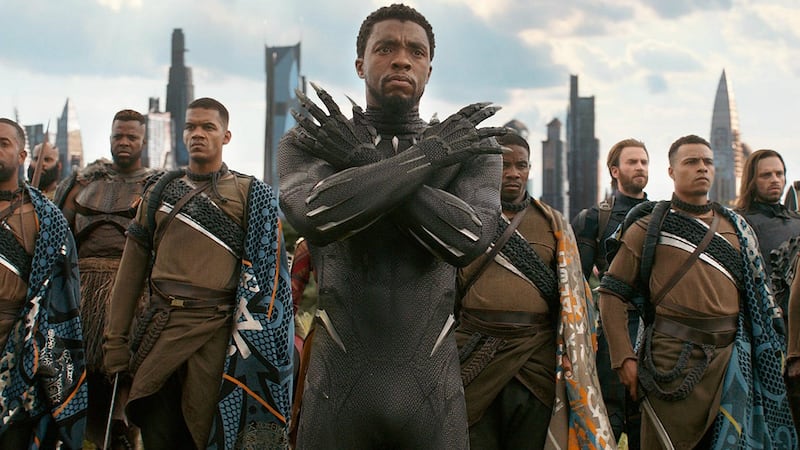They were not the first to include post- or mid-credit scenes in their films, but there’s no denying that Marvel have perfected the art.
Iron Man, The Incredible Hulk, Thor, Captain America: The Winter Soldier are some of the MCU films containing post-scene credits which offer a twist, teaser, or tantalising look at what’s coming next, and have become as anticipated as the movies themselves.
The studio’s latest blockbuster, Dr Strange in the Multiverse of Madness, is no exception.
Warning: Spoilers ahead.
The film includes a mid-credits scene in which the character Clea (Charlize Theron), a former student and love interest of Stephen Strange, turns up to confront the doctor with the consequences of his actions from the film. Namely that a recent “incursion” he made, in which two universes collided, resulted in the total destruction of both.
Clea then opens a portal to the Dark Dimension, where Strange faced off against Dormammu in the first film, and asks if he’ll join her.
While some post-credits scenes are self-explanatory, others are picked apart on social media and in online forums as fans hope to decipher what every word, look and camera angle means.
A history of the post-credits scene
The first film to use the concept was the 1966 movie The Silencers. After the credits rolled, Dean Martin’s super-spy, Matt Helm, is seen laying on a rotating bed surrounded by a group of scantily clad ladies, along with the promise that his character would return in a sequel.
Another notable pioneer was The Muppet Movie, released in 1979. After the final credits roll, Animal appears to tell the audience to “go home” in his own inimitable way. A message that would be repeated by Matthew Broderick in the 1986 hit, Ferris Bueller’s Day Off.
By the 1980s, the concept had gained traction, with some films using the device to add humorous details, such as Airplane!’s abandoned taxi driver and his ever-increasing fare meter.
Others were clearly included to set up sequels, some of which were never green-lit, such as with 1985’s Young Sherlock Holmes, whose post-credits reveal that Moriarty was in fact, alive.
Sequels, homage and nostalgia: why do movies have post-credits scenes?
While the device began as a way of alerting audiences to a sequel or plot twist, they also serve as a gift to fans, often recognising in-jokes that have become canon within the fandom.
Although they’ve never contained a post-credits scene, the James Bond films have become famous for featuring the words: James Bond Will Return, after the final credits roll. Four words made all the more intriguing given that producers killed him off in the recent No Time To Die.
They’ve also become a place where writers can be mischievous, irreverent or downright nostalgic. In 2016's Deadpool, Ryan Reynolds, as the eponymous anti-hero, pays homage to the post-credits scene in Ferris Bueller’s Day Off by wearing a replica of Bueller’s dressing gown and mocking the audience for sitting around waiting for the scene.
It also gives writers the chance to pay homage to films that have inspired them, or even go full meta, as is the case with 2009’s Zombieland.
After Columbus (Jesse Eisenberg) mistakenly shoots Bill Murray in his LA mansion, the gang bid his farewell and leave. The post-credits scene flashes back to a moment between Murray and Tallahassee (Woody Harrelson) in which Harrelson attempts to quote Murray’s Caddyshack character Carl Spackler who in turn was quoting French philosopher Jean-Paul Sartre.
Murray then breaks character to show him how to do it. Look closely and you can see Harrelson desperately trying to keep a straight face.
Here are five of the best post-credits scenes...
‘The Avengers’ shawarma scene
After Tony Stark is yelled back to life by the Hulk, he suggests they head to a “shawarma joint about two blocks from here”. Cue the team sat around a table in the badly damaged Shawarma Palace, while the owners sweep up, eating their post-victory dinner in silent camaraderie.
Kip and Lafawnduh’s wedding in ‘Napoleon Dynamite’
The scene for anyone who didn’t think the love shared by Napoleon’s brother Kip and Lafawnduh, whom he met in an internet chat room, was real. Kip’s post-oath rap was a highlight, as was Napoleon's arrival on horseback.
Shaw joins ‘Fast & Furious 6’
Just when the audience thought the franchise couldn’t get any more testosterone-fuelled, the post-credits scene of the sixth movie in the instalment upped the ante.
Showing Han’s death in Tokyo, as the fan favourite lay dying, Jason Statham emerged as Decker Shaw, the brother of the film's villainous Owen Shaw (Luke Evans), hellbent on revenge.
'Venom' meets ‘Spider-Man: No Way Home’
Spider-Man: No Way Home was a look to the past, to the legacy of Spidey, bringing together the three actors who had played the superhero — Tom Holland, Andrew Garfield and Tobey Maguire.
In contrast, the film's post-credits scene pointed to the future, as Venom’s Eddie Brock (Tom Hardy) is whisked away — collateral damage of Dr Strange’s spell — leaving a little of his black symbiote behind.
Tony’s not alone in ‘Iron Man’
“You think you’re the only superhero in the world?” Samuel L Jackson’s Nick Fury asks Robert Downey Jr’s Iron Man as he returns to his hilltop mansion after revealing his identity.
With his next 10 words, Fury launches the highest-grossing franchise in cinema history: “I’m here to talk to you about the Avenger initiative.”
